


























Dance is a powerful impulse, but the art of dance is that im pulse channeled by skillful performers into something that be comes intensely expressive and that may delight spectators who feel no wish to dance themselves. These two concepts of the art of dance—dance as a powerful impulse and dance as a skillfully choreographed art practiced largely by a pro fessional few—are the two most important connecting ideas running through any consideration of the subject. In dance, the connection between the two concepts is stronger than in some other arts, and neither can exist without the other.
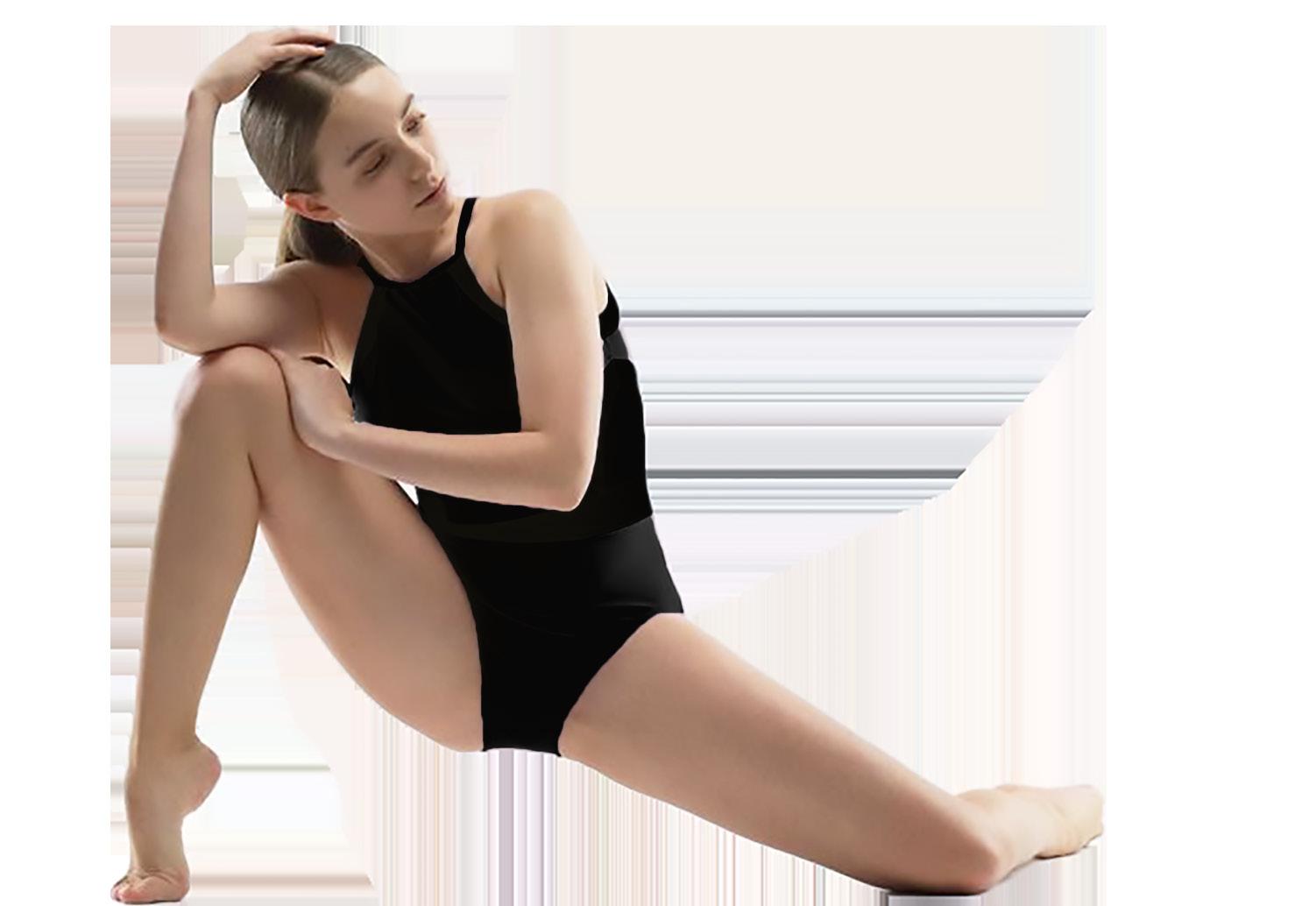
DANCE, THE MOVEMENT OF THE BODY IN A RHYTHMIC WAY, USUALLY TO MUSIC AND WITHIN A GIVEN SPACE, FOR THE PURPOSE OF EXPRESSING AN IDEA OR EMOTION, RELEASING ENERGY, OR SIMPLY TAKING DELIGHT IN THE MOVEMENT ITSELF.
The earliest historical records showing the origins of dance are cave paintings in India dating to about 8000 BCE Egyptian tomb paintings also depict dance in about 3300 BCE These early dances may have been religious in nature, and by the era of ancient Greece, people were incorporating dance into celebrations of the wine god Dionysus (and later the Roman god Bacchus) and into ritual danc es at the ancient Greek Olympic Games. In addition, early people danced for enjoyment, seduction, and entertainment.
Much of the dance created by choreographers and composers and performed as professional entertainment today has its roots in ballet, which, in turn, dates back to the Renaissance. Ballet dance became an art in the 18 century, when ballet companies sprang up around the world, telling entire stories through the emotional move ments of the ballet dancers. As shoes and costumes changed, dancers gained greater expressive freedom, but some ballet danc ers found the rules (and the pointe shoes) of classical ballet restric tive. In the twentieth century, modern dancers and choreographers such as George Balanchine and Martha Graham began to decon struct ballet to create new forms of performance dance.
The body is the primary instrument of dance. Dancers may use their entire bodies or limit movement to certain body parts. Professional dancers train their bodies to have exceptional agility and strength.
Action refers to what the dancer does while dancing, whether they stay rooted in one spot or move across the floor and through the air.
Dancers move through space in every possi ble way, varying their level, direction, and path as they move, no matter the form of dance. They also move, often in very specific ways, in relation to other people taking part in a dance.
Time is one of the key elements of dance, as it relates to the rhythm of the movements. Per formers often choreograph their dances to the meter of the music.
The final element of dance, energy, speaks to how the dancers move through space and time. Dancers can use their bodies and their dance technique to make movements that are smooth or sudden, that feel tight and re stricted or light and relaxed.





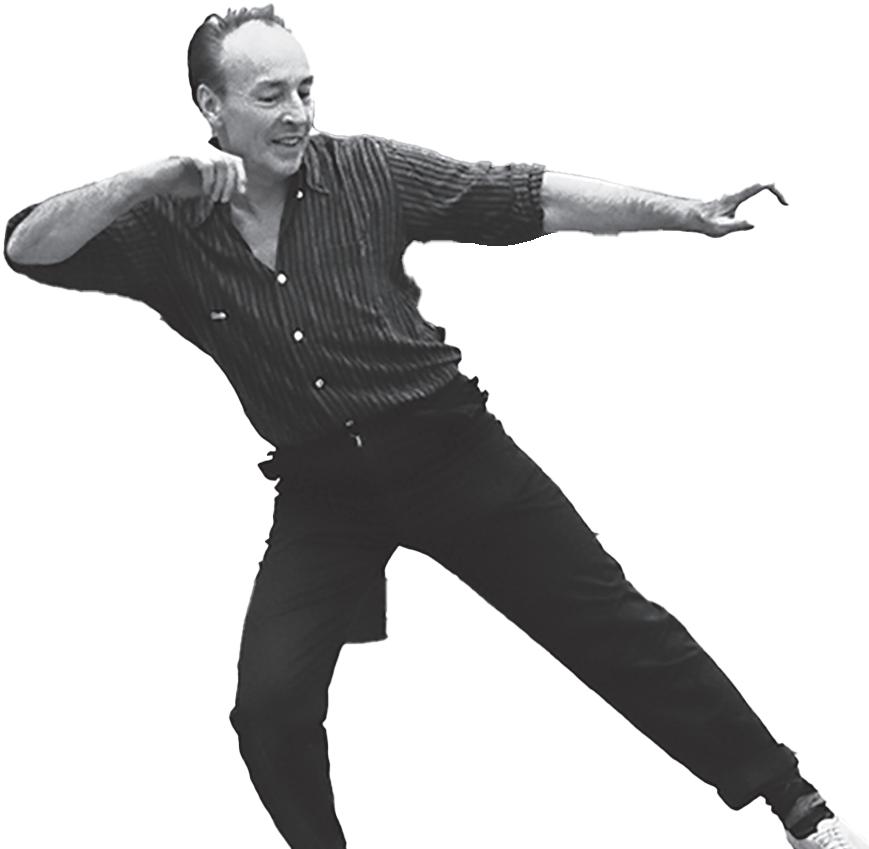

TIME magazine named Martha Graham “Dancer of the Century,” and People magazine named her among the female “Icons of the Century.” As a choreographer, she was as prolific as she was complex. Graham created 181 ballets and a dance technique that has been compared to ballet in its scope and magnitude. Her approach to dance and theater revolutionized the art form and her in novative physical vocabulary has irrevocably influenced dance worldwide.
(1894-1991) (1867-1927)

Isadora Duncan was an American dancer whose teaching and performances in the late 19th and early 20th century helped to free ballet from its conservative restrictions and presaged the development of modern dance. She was among the first to raise in terpretive dance to the status of creative art.




(1938-1993)



Rudolf Nureyev made a great contribution to the reappraisal of male ballet and, by working with contemporary choreographers, went far beyond the “classical / modern” divisions. Rudolf liked the chore ographers very much. He always maintained that ballet could not progress without them. Nureyev gauged the importance of the ex plorations of the contemporary ballet well.
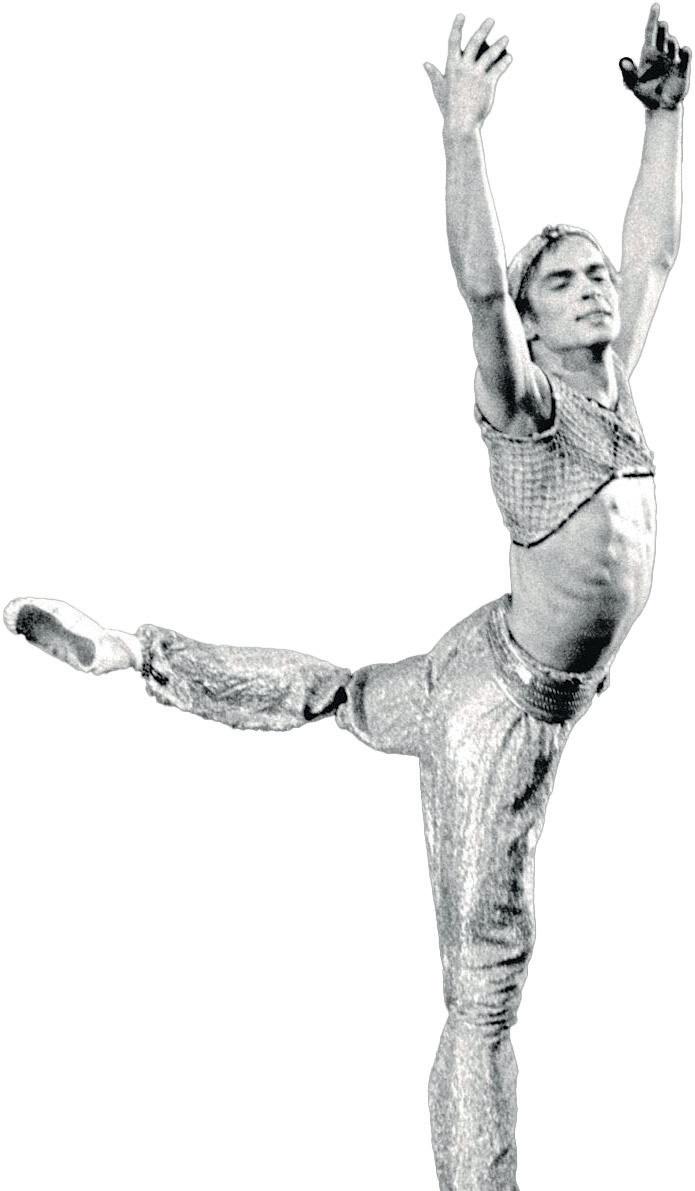
Balanchine was an international pioneer of dance and was instrumental in paving the way for ballet in America to flourish. Nowadays George Balanchine “is regarded as the foremost contemporary choreographer in the world of ballet.” He creat ed over 400 dance works, that “remain a standard-bearer of modern choreography.” Elizabeth Kiem wrote that Balanchine was “the most influential figure in 20th century dance”.
(1879- 1958)

Laban was the first person to develop com munity dance and he has set out to reform the role of dance education, emphasising his belief that dance should be made available to everyone. He break down how movement can be expressed into it’s simplest forms, allowing a performer to call upon them and experiment in a thorough manner.
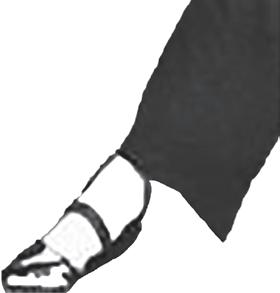




(1919-1991)


Outstanding ballerina of the English stage whose musicality, technical perfection, and precisely conceived and executed characterizations made her an international star. She was the first homegrown English ballerina, and she became an iconic and much-loved figure, particularly after she was profession ally paired with Russian dancer Rudolf Nureyev. She became president of the Royal Academy of Dancing in 1954 and was in strumental in persuading well known dancers from all the major companies to appear with the Royal Ballet.


(1908-1972)
The mexican dancer, José Limón, electrified the world with his dynamic masculine dancing and dramatic cho reography. One of the 20th century’s most important and influential dance makers, he spent his entire career pio neering a new art form and fighting for the recognition and establishment of the American Modern Dance.









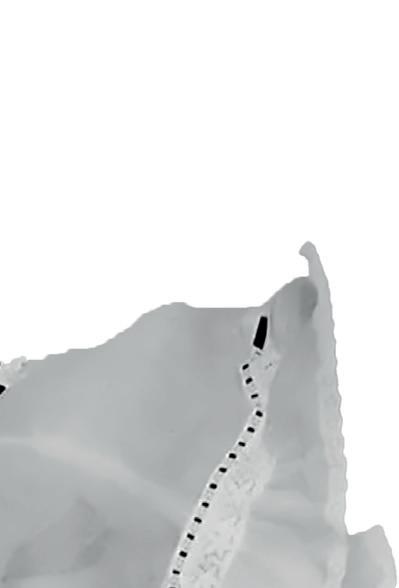
Merce Cunningham, considered the most influential choreographer of the 20th century, was a many-sid ed artist. He was a dance-maker, a fierce collaborator, a chance taker, a boundless innovator, a film producer, and a teacher. Most of Cunningham’s ideas have been adopted by two generations of experimental mod ern-dance choreographers.


Katherine Dunham was the first to combine the individualis tic dance movements of Caribbean and African cultures with European-style ballet. She further fused anthropological re search into the realm of dance artistry by uniquely including social and cultural rituals into public performances. She had one of the most successful dance careers in Western dance theatre in the 20th century and directed her own dance com pany for many years.


(1881-1931)
She was a principal artist of the Imperial Russian Ballet and the Ballets Russes of Sergei Diaghilev. Pavlova is most recog nized for her creation of the role of The Dying Swan and, with her own company, became the first ballerina to tour around the world, including performances in South America, India and Australia.



Jack Cole is credited as the father of theatrical jazz dance. His career spanned from the 1920s through the 1950s and he developed a specific method of train ing theatrical jazz dancers in a style which he called “jazz-ethnic-ballet”.
(1886-1973)
Mary Wigman was a German dancer and chore ographer, notable as the pioneer of expressionist dance, dance therapy, and movement training with out pointe shoes. She is considered one of the most important figures in the history of modern dance.


Ballet, one of the most classical and artistic forms of dance, has a rich history. It first emerged during the Italian Renaissance in the 15th century, before France and Russia developed the techniques further. Additionally, the word “ballet” itself is a French word derived from the Italian word “Balletto,” which means “to dance.”
Ballet dance is a traditional art form that originated over 500 years ago in Italy. Though ballet dancers are trained to appear gen tle and graceful in their movements, ballet technique requires a tre mendous amount of strength, balance, technical skill, and flexibility. Dance moves like arabesques, pliés, and pirouettes are part of the basic movement vocabulary of ballet. Traditionally, female ballet dancers perform en pointe—meaning on the points of their tiptoes. Some of the most famous ballets include Swan Lake, The Nutcrack er, and Romeo and Juliet.

There are four different ballet dance styles that have shaped the trajectory and evolution of the art form:
Starting in the nineteenth century, Romantic ballet was heavily influenced by the Romantic era and is where some of the many recognizable aspects of ballet emerged, like pointe work and tu tus. Romantic ballet emphasized emotion, lyricism, and drama in its narratives, and led to a rise in lead female dancers—whereas previ ously, male dancers had dominated the scene.
Classical ballet is a traditional form of ballet, usually accompanied by a full orchestra and consisting of a story-driven narrative that is often anchored by a female ballerina. The movements of classical ballet often emphasize the weightlessness and extension lines of the ballerina, focusing on fluidity and outward leg rotation. Sets are constructed to complement the show’s narrative, and the dancers wear intricate costumes.
This form of contemporary dance incorporates certain classical ballet elements, including elements of acting and some pointe techniques, but it is considered less strict in its execution. Contem porary ballet dance techniques allow for a wider range of upper body movement than classical ballet, and can also be performed barefoot, unlike ballet which is always with ballet shoes.

Emerging in the 1920s, neoclassical ballet is less structured and more abstract than the other forms of ballet. Neoclassical ballet was formed as a response to the prevalent, dramatic elements of romantic ballet, and does not make use of traditional ballet ele ments like costumes, sets, or involved narratives.


Jazz dance is a form of dance that combines both African and European dance styles. This high-energy dance has a liveliness that sets it apart from traditional dance forms, such as classical ballet. Like jazz music, jazz dance fea tures improvisation. Dancers respond to the music with their body movements, changing their motions with the musicians’ spontaneous instrumental creations.
The history of jazz dance dates back to the 1600s during the West African slave trade. A social dance, jazz dance originated in the United States of America as a celebratory movement when enslaved people (and, lat er, freed Black Americans) gathered to sing and dance. Rhythmic and expressive movements characterized this early form of jazz, which had both Caribbean and African dance roots.
With the birth of jazz music in New Orleans, jazz dance gained popularity during the twentieth century. Jazz also began appearing in vaudeville acts with ragtime music. In the 1930s and 1940s, big bands popularized jazz dance in ballrooms, and the era of swing jazz began. Dancer and choreographer Katherine Dunham played a pivotal role in showcasing jazz dance to the world during this time.
Modern jazz emerged in the 1950s as Broadway show choreographers in New York City began incorpo rating jazz on the stage. Choreographers Jack Cole, Bob Fosse, and Gus Giordano have particularly influenced modern jazz. Today, commercial jazz is a popular form of jazz dance, combining elements of hip-hop and pop into stylized choreography.
Ballet and Modern Dance Forms heavily in fluence the classical Jazz Dance technique. The origin of Classical Jazz is from the Afri can-American Vernacular Dance of the 19th century. This is one of the most exquisite types of Jazz Dance. Here is the video to give you an insight into the Classical Jazz Dance.
This is the most common style of Jazz Dance that is prevalent today. Contemporary Jazz Dance shares the movement characteristics with the contemporary modern Dance. The main focus of these dancers is on expressing their emotions through expressions, exten sions, and turns. Here is the video to give you an insight on the Contemporary Jazz Dance
This is the type of Jazz Form which is used for commercial purposes. It is more of an en tertainment-driven Jazz, meant to sell or pro mote a product or a service. This type of Jazz Dance form is more used in music videos, movies, televisions, and profit-performances. Here is the video to give you an insight into Commercial Jazz Dance.
Combined with the elements of Samba and Salsa, this type of Jazz Dance is usually per formed under Latin American Rhythms. This form of Jazz is dominated by the traditional American style and is one of the most elegant and magnificent forms of Dance.
This form of Jazz Dance combines the modern form of dance, with its original Afri can-American ethnic roots. The focus of this type of Jazz dance is more on rhythm and im provisation, making it more of a simple dance, but very cultural.

Street Jazz or the Urban Jazz, this type of jazz form is one of the most popular forms of underground dancing. Various music videos use Street Jazz in their videos. This is more of a rough and casual form of dance, as com pared to the proper ball jazz dancing.
I am sIncerely tryIng now to create a dance technIque based entIrely upon correctIve exercIses, created wIth a knowledge of human anatomy; a technIque whIch wIll correct physIcal faults and prepare a dancer for any type of dancIng he may wIsh to follow; a technIque havIng all the basIc movements whIch govern the actIons of the body; combIned wIth a knowledge of the orIgIn of movement and a sense of artIstIc desIgn.

Contemporary dance is a style of interpretive dance that em braces innovation, blending techniques from various genres, including classical ballet, jazz, modern dance, and lyrical dance. This genre of dance, which focuses more on floor work over leg work and pointe, isn’t restricted by the rules that govern traditional dance forms. Instead, it relies on im provisation and versatility and is characterized by freedom of movement and fluidity, letting dancers explore the mind-body connection and ideally evoking emotion in the audience.
Contemporary dance is sometimes considered a form of storytelling, and dancers may use the medium to portray characters, replay events, or convey personal stories. Its rou tines may also communicate abstract ideas, such as ethical values, acceptance of self, and timely social issues. Costumes typically reflect the topic or tone of the accompanying music, and dancers often perform with bare feet. Performers may perform this type of dance to various musical styles, spoken word poems and songs, or silence.
Unlike traditional forms of dance, contemporary is con sidered to be somewhat unbound by much rigidity and rules.
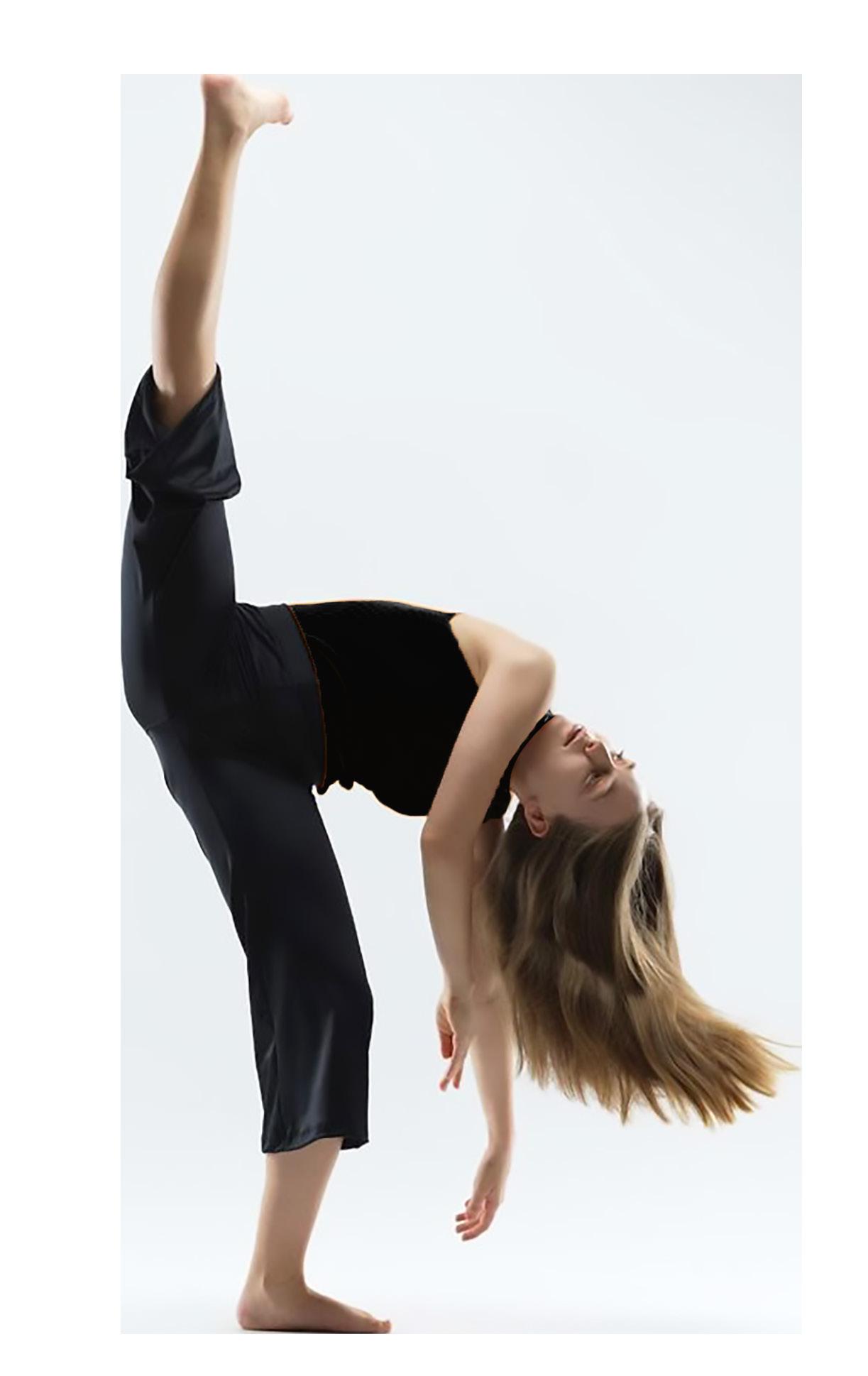
The dancers of this genre have the ability to transform a performance based on their own interpretations. This is achieved through honing in on certain techniques, such as focusing on strong ballet-influenced leg movements, fall and recovery, floor work and further improvisational elements. More frequently than not, contemporary dance is performed barefoot to allow for more fluidity in movement and connec tion to the dance surface.
One of the most important aspects of contemporary dance is the element of improvisation. While some forms of dance such as ballet can be quite rigid and structured, con temporary dance relies on fluidity and improvisational move ment to evoke a range of feelings in the viewer. It also offers the dancer ultimate creative freedom to perform an emotive piece that identifies with them.

Graham technique is a modern dance move ment style and pedagogy created by American dancer and choreographer Martha Graham . This technique has been called the “cornerstone” of American modern dance, and has been taught worldwide. The Graham technique is based on the opposition between contraction and release, a concept based on the breathing cycle which has become a “trademark” of modern dance forms. Its other dominant principle is the “spiral ing” of the torso around the axis of the spine. It also incorporates formal exaggerations of “natu ral” movements. Graham technique is known for its unique dramatic and expressive qualities and distinctive floorwork; dance critic Anna Kisselgoff described it as “powerful, dynamic, jagged and filled with tension”.
The Cunningham technique looks a bit like bal let but also differs in many ways. Cunningham dancers utilize their torsos, bending sideways, for ward and backward, and hold balances for long periods. They often must be able to do two or three things at the same time, executing different rhythms and movements in the legs, torso, and arms simultaneously. There are frequent chang es of direction, and no rhythm from the music to count on. Cunningham’s work is both a physical and mental challenge.

The José Limón technique develops Humphrey’s principal concepts of falling and recovery, suspen sion and succession, breathing and the dynamics of the weight of the body. Limón technique em phasizes the natural rhythms of fall and recov ery, a conscious use of breath, and the interplay between weight and weightlessness. It provides dancers with an organic approach to movement that easily adapts to a range of choreographic styles. In the Jose Limón technique it’s essential to develop awareness of the sensations felt during a movement. This idea is not the external form of the movement, but how the dancer expresses
with the mind, spirit, and the body. Limón was think ing that the entire body is the instrument of com munication with dance. The technique emphasizes and eliminates the extreme effort and unnecessary tension that could interfere with the original inten tion of the movement.

The Erick Hawkins technique values the human instrument as a vehicle for artistic expression that is in accord with the natural use of the body. The technique is scientifically solid in its knowledge and application of kinesiology (the study of the body in movement), as well as rhythmic virtuosity, and a dynamic awareness of free-flow energy. The tech nique promotes facile bodies that develop strong core strength, while learning to become aware of and release extraneous bodily tension that often prevents healthy alignment and proper execution of movement. The Dance Division faculty believes that the technique provides a solid foundation for dancers, regardless of their stylistic preferences. The principles of the Hawkins technique are easily transferred to other dance styles, and are especially useful for future teachers who wish to train young
Hip hop dance is a style of street dance form that evolved from hip hop culture and hip hop music. It borrows elements from a number of different styles like African dance, tap, and ballet. Hip hop dance began as a freestyle dance performed in the streets by dance crews, mostly to hip hop music. Today, hip hop dance may involve choreography, along with various points of improvisation, especially during dance battles or freestyle competitions. Some classic hip hop dance moves include the running man, the humpty dance, and the cabbage patch, and techniques often involve body isolations and other unique movements, like popping, locking, and krumping.
Hip hop is a style of dance that originated on the East Coast in the late 1970s in the Bronx, New York City. Groups of people would often perform the dances in the streets, clubs, and underground venues of New York. It evolved closely with many other elements of hip hop— like DJing, graffiti writing, and MCing—and borrowed certain signature elements from the funk styles of the 1960s.
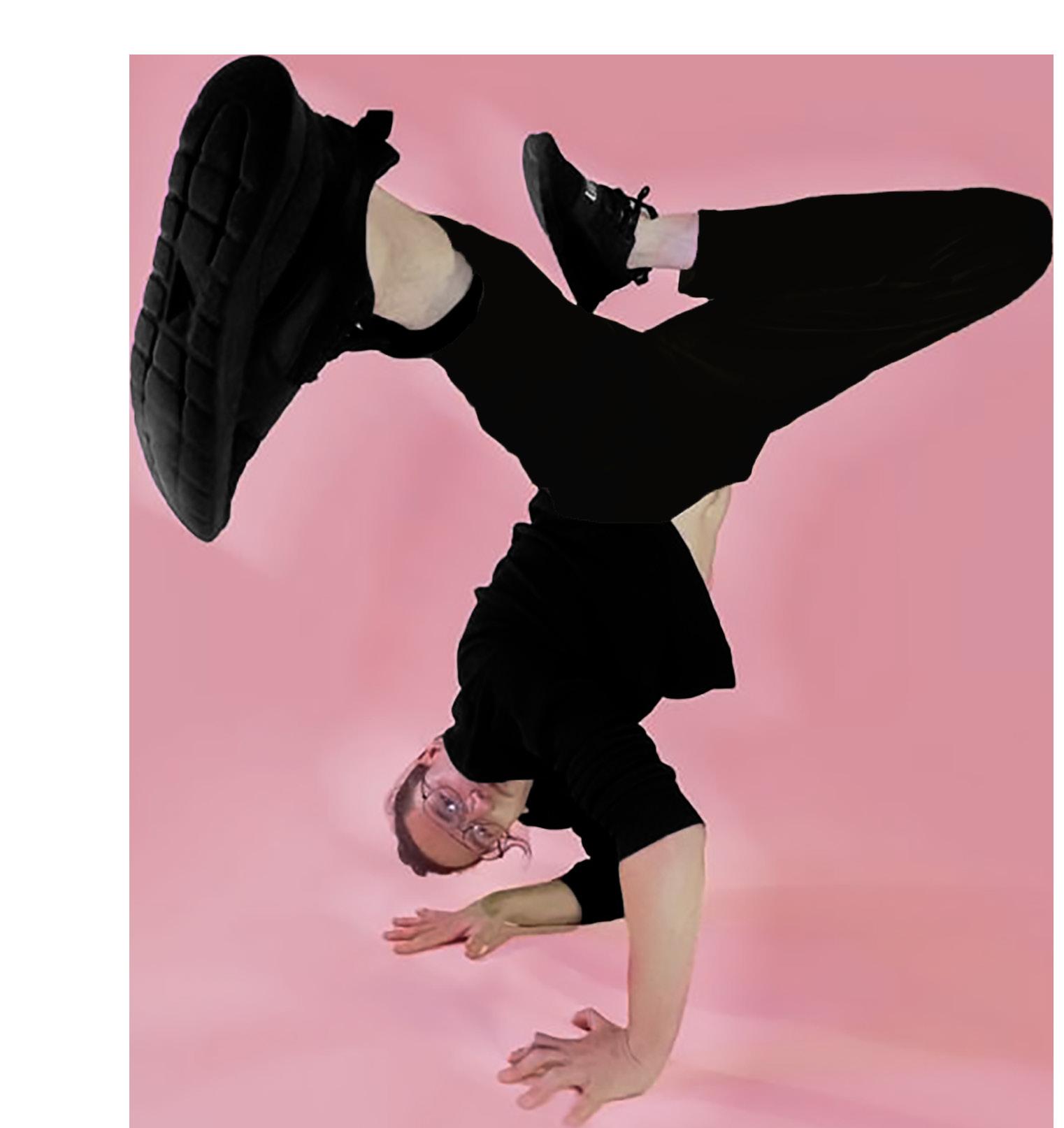
Thought to be one of the very original styles of Hip Hop, B-boying is characterized by acrobatic Vigour Move ments, upright movements, and footwork. Dancers also punctuate their routines with a movement known as the Freeze. Break dancing is mostly improvised, with no “standard” routines or movements. The emphasis is on movement, energy, innovation, comedy, and a hint of danger. It is intended to represent the harsh world of the streets from which it is claimed to have emerged. It is also connected with a certain type of clothing, such as baggy pants or sweatsuits, baseball caps are worn sideways or backwards, and sneakers.
While technically two styles, Locking and Popping usual ly go hand in hand. Locking requires fast actions, sharp pauses, and extravagant gestures. Popping, on the oth er hand, is a bouncy style that demands extreme use of counter-tempo. For a long time, popping and locking have inspired hip hop, dubstep, and other modern dance tech niques. However, the moves of these two dancing styles differ. While both dance genres tend to overlap, popping and locking is a blended style with a separate beat. This one-of-a-kind manoeuvre combines two movements: the pop and the lock.
Funk, which is a coalition of Disco and Soul, uses a blend of fluid and sharp moves and is usually extremely choreo graphed. Locking and Popping are also frequently com bined into this dance style. This is a lively dance style that is frequently seen in video clips and nightclubs. It’s a terrif ic place to start for new dancers (especially if you’ve never attended a dance class before) and it provides a wonder ful exercise — you won’t even realise you’re working out! Break it down to some of the most recent music trends and learn how to rule the dance floor!
Up rock uses a blend of many dance moves to build soul
ful dances. Uprock is a competitive, soulful street dance. It is performed to the beats of Soul, Rock, and Funk music. The dance consists of foot shuffles, spins, turns, freestyle motions, “jerks” (sudden body movements) and “burns” (hand gestures). Uprock is believed to require discipline, patience, heart, soul, and knowledge to master. Nobody used to teach Uprock back in the day. It was all about watching and studying, then applying what you’d learned in a dancing competition. Every two weeks, there were contests in Brooklyn, with crews competing.
As its title implies, Liquid Dance is a fluid and delicate dance with a centre on the arms and palms. It may in clude some forms of pantomime and exceptional danc ers will use a range of body moves. Liquid dancing is an illusion-based kind of gestural, interpretive dance that is one of the most expressive and flexible dance genres available today. In other words, it is a dance form that uses smooth gestures and body motions to create the illusion that the dancer’s body is as movable as liquid, hence the name of the dance. The arms and hands are mostly in emphasis, though expert dancers move the entire body. Study the liquid dance is not easy and takes a lot of prac tice and learning. It takes practice to learn how to move your body in such a way that it creates the illusion of a flowing or moving liquid.
Another fluid-like style, Boogaloo uses the complete body sliding smoothly like butter, often with the rolling of the hips, head, and knees. The Boogaloo is a lively dancing form that originated in the 1970s. It is well-known for incor porating a variety of various street dancing techniques. We’ll show you how to do the most fundamental booga loo dance moves in this article.
If we had to pick a Hip Hop style that invokes sensuality, it would be Reggae for its Latin influences mixed with more modern Hip Hop moves set to the modern evolution of Reggae music. The secret to reggae music is to relax
and do what seems natural, rather than following a tight set of rules. There is no “correct” way to dance to reggae music; your movements should be a reflection of how you feel. Approach the dance floor with an open mind, try to concentrate on the music, and let your body do the rest.
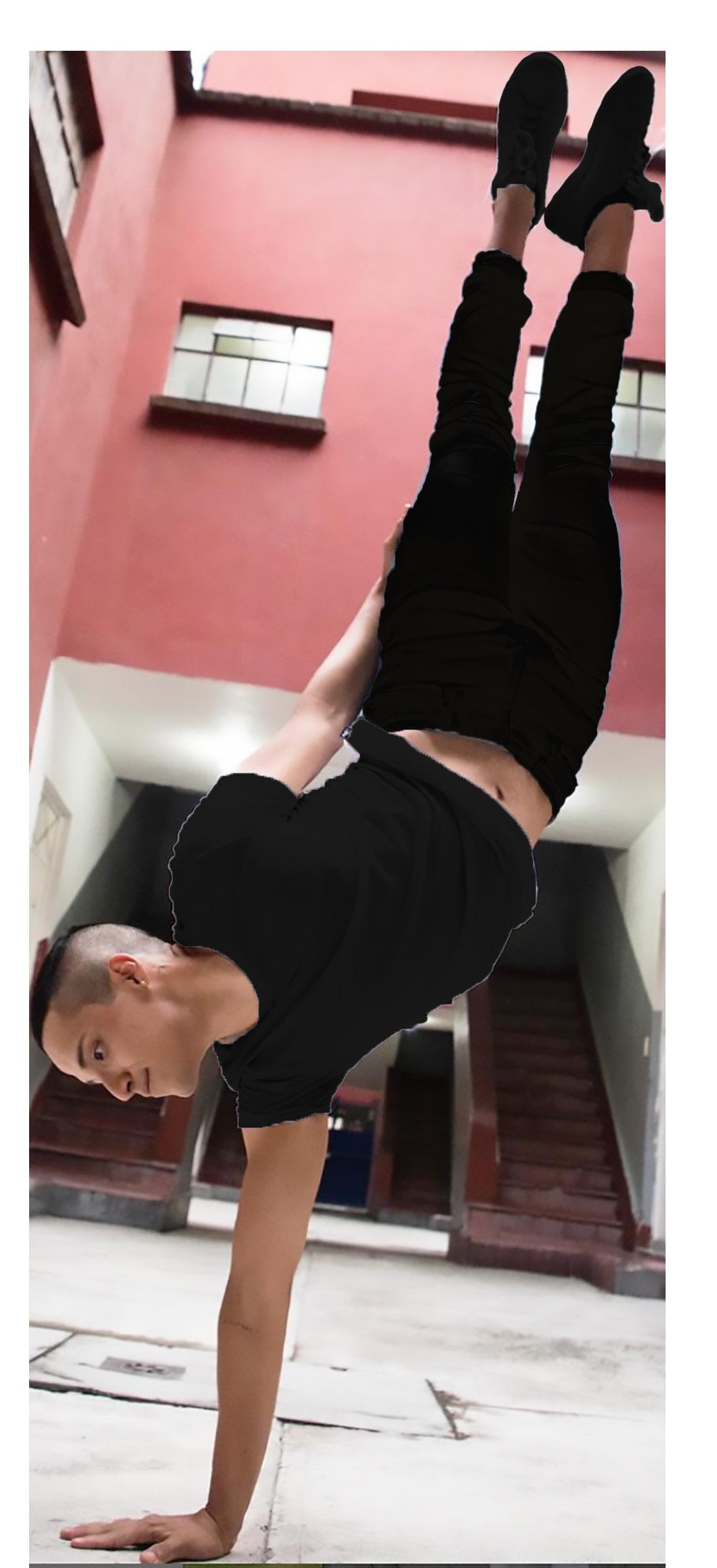
Lyrical is a unique style of Hip Hop in that it tells a story and is danced to the words of the music instead of the beat. It is usually fluid and more interpretive than other styles of Hip Hop. Lyrical dance got its name from the definition of the word lyrical, which means “having a poetic, ex pressive nature; musical; characterised by or expressing spontaneous, direct feeling; conveying profound personal emotions or observation; very rhapsodic or impassioned.” Lyrical dance expresses emotions through movement and is expressive, nuanced, and dynamic. It combines sophisticated, highly technical, and naturalistic elements.
Stepping is a group dance that includes using body ac tions to create percussive beats. Synchronized motions and percussive beats are featured in the dances. Step dancing is a showcase for a team’s individual style as well as its cohesiveness. Its origins may be traced back to competitive drill teams and marching bands, and its movement patterns are inspired by African and slave dances such as patting juba and ring screams.
remaining true to the values of the hip-hop culture which transforms negative energy into a positive force.
-Mourad Merzouki








 Designed by Andrea Romero Rivera
Designed by Andrea Romero Rivera